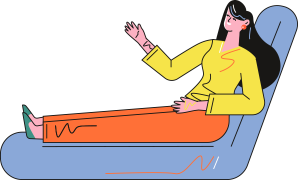Is hyperthyroid heart disease dangerous?
Hyperthyroidism can repeatedly cause an increase in heart rate and metabolism, which is quite active, causing a long-term overload of heart function, leading to the formation of hyperthyroid heart disease, a chronic pathological change process. In the middle and early stages, it generally does not pose a life-threatening risk, only manifesting symptoms such as palpitations, tightness after activity, breathlessness, or chest tightness, which can improve with rest. However, if hyperthyroidism is not cured for a long time, or if hyperthyroid heart disease is not treated in time, it can lead to severe heart failure. If there is a severe decline in heart pump function, causing the ejection fraction to be below 30%, it can easily cause sudden pump failure or severe arrhythmias, such as ventricular tachycardia or fibrillation, posing a life-threatening risk to the patient.
Trending Health Topics

Get the latest health & wellness news daily right to your inbox.


 Subscribe
Subscribe


